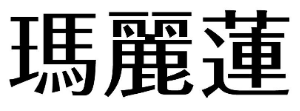【Trademarks】A case related to the trademark “瑪麗蓮” selected by TIPO for recent years
2022-07-29

Keyword advertising and the determination of trademark infringement
| Contested trademark | |
 |
Registered No. 01596983 Class 25: Brassieres; underwear… Registered No. 01592205 Class 35: Advertising planning; advertising design…; online shopping… |
【Decision No】Civil Judgement of the Intellectual Property Court, 2018 Min
Shang Su Zi No. 41
【Date】 August 31, 2020
【Issue】1. The determination of whether using another person’s trademark to be the keyword for keyword advertising or the title of the advertisement constitutes the “use of a trademark”.
2. The determination of whether publishing the advertisement whose title consists of another person’s trademark constitutes a conduct of unfair competition stipulated in Article 25 of the Fair Trade Act.
【Relevant statutes】Articles 5 and 68 of the Trademark Act
【Decision Highlight】
- The defendant’s conduct of using the trademark at issue “瑪麗蓮(Marilyn)” to be the keyword of a “bring-out” type of keyword advertising is an internal conduct of linking program instruction. It is an internal intangible use rather than an external tangible use, which is not enough to make consumers recognize it as a trademark. Accordingly, it does not constitute the “use of a trademark”. The plaintiff argues that, according to the so-called “initial interest confusion”, the advertisement shown after using the trademark at issue as the keyword to perform the search may cause confusion, misleading relevant consumers to erroneously believe that the website address is owned by the plaintiff. Nevertheless, once the consumers click on the website address and enter into it, they will clearly notice that the owner of the website is another person (namely, the defendant “company A”) because the trademark at issue is not usedin the website and the owner of the website has identified the name of its own company or other distinctive signs in the website. Therefore, relevant consumers will not erroneously believe that the website is owned by the plaintiff, not to mention the likelihood of confusion caused by erroneously believing that the goods or services on the advertiser’s website originate from the plaintiff. The so-called “initial interest confusion” does not fall into the scope of “likelihood of confusion” stipulated in Article 68 of the Trademark Act.
- The defendant “company B” used the keyword insertion function provided by the advertising platform to its advertisement at issue and the content of the advertisement shown on the search results page did contain the keyword “瑪麗蓮” juxtaposed with the term“維娜斯(Venus)”, enabling relevant consumers to recognize that “瑪麗蓮” is a trademark and click on the link to the official website owned by defendant A. Obviously, defendant B intended to actively promote defendant A’s shapewear and other goods or services on the internet through aforementioned attempts, which was different from the “bring-out” type of keyword advertising mentioned above because it was not just an internal intangible use that simply triggered the search through the use of keywords. As a result, defendant B’s conducts certainly belong to the “use of a trademark”.
- If a business purchases the keyword consisting of the name or brand of another business, its online advertisements and the link to its website will be shown on the search results page once the keyword is used by consumers to perform the search online even if the content of the keyword is not related to itself or the goods or services that it expects to provide. In addition to that, if the said business also uses controversial wordings concerning the keyword to lead consumers entering its website and browsing the content for the sake of promoting its own goods or services, it is taking advantage of the hard efforts of another business to secure the trading opportunities, i.e. extracting economic benefits and achievements included in the commercial reputation of another business. This kind of conducts is not only culpable from the perspective of business ethics, but also detrimental to the order of fair competition in the market, which shall fall into the scope of the conducts of unfair competition stipulated in Article 25 of the Fair Trade Act.
[Learning point]
Regarding the action of buying an advertisement keyword which consisting a competitor’s brand as well as inserting said keyword in one’s advertisement together with one’s own trademark, although it is indeed an approach to enhance the exposure of one’s brand and attracting consumers’ visits, if in such use the consumers would recognize the said competitor’s trademark, it could still constitute “use of trademark” of said competitor’s. It may even constitute a type of unfair competition practices in accordance with the Fair Trade Act. Hence, when considering applying a competitor’s trademark as a keyword, it is important to evaluate whether in such use the consumers would recognize it as a trademark, or if it would cause confusion to consumers or be deemed free-riding other’s business reputation, to avoid violating laws.
消息來源:
